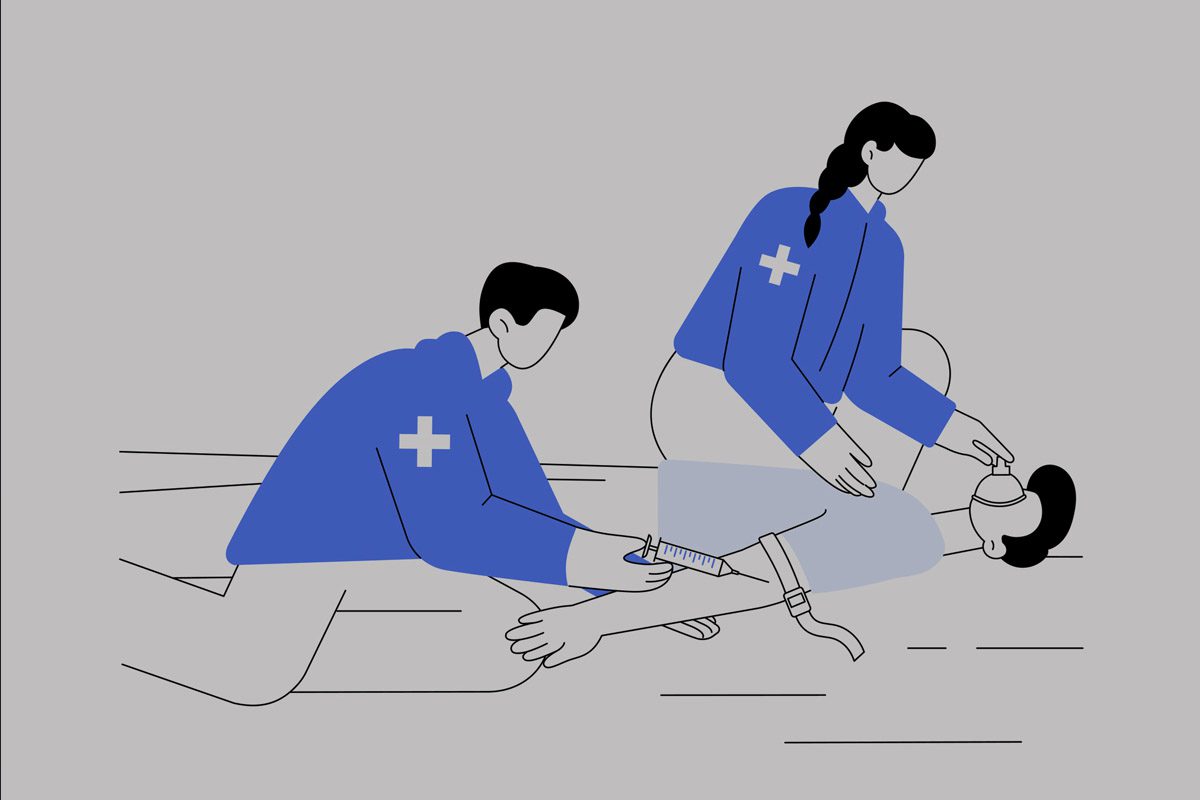Prim Care Companion CNS Disord 2023;25(2):22br03358
To cite: Appel G, Shin B, Shah A, et al. Curbing physician stigma toward adolescents with nicotine and opiate use. Prim Care Companion CNS Disord. 2023;25(2):22br03358.
To share: https://doi.org/10.4088/PCC.22br03358
© 2023 Physicians Postgraduate Press, Inc.
aDepartment of Psychiatry, Weill Cornell Medical College, New York, New York
bDepartment of Psychiatry, University of Washington, Seattle, Washington
cUniversity of Pennsylvania, Philadelphia, Pennsylvania
*Corresponding author: Giselle Appel, MS, Department of Psychiatry, Weill Cornell Medical College, 525 East 68th St, Box 140, New York, NY ([email protected]).
E-cigarette use among adolescents has sky rocketed over the past decade, leading the US Surgeon General to declare youth vaping an epidemic in 2018 and the US Food and Drug Administration (FDA) to ban e-cigarette use in 2022.1,2 Meanwhile, opioid use among adolescents is also on the rise, and opioid-related deaths among adolescents have increased at an alarming rate.3 Given the vast number of adolescents who use e-cigarettes (estimated to be 2.5 million in 2019) and the rapidly escalating adolescent mortality rate from opioid overdose, there is an urgent need for physicians to recognize, diagnose, and treat these disorders in adolescents.4 However, stigma may pose a significant challenge to this endeavor, as it has in the adult population,5 thus guiding the present study.
METHODS
The study used a cross-sectional survey design and was conducted between December 2019 and March 2020. Respondents included residents and board-certified attending physicians (within internal medicine, psychiatry, and pediatrics) who treat adolescents in New York City. The Weill Cornell Medicine Institutional Review Board approved the study. The questionnaire comprised the Medical Condition Regard Scale (MCRS),6 assessing for major depressive disorder (MDD), daily nicotine use, opioid use disorder (OUD), and type I diabetes. The MCRS is a valid and reliable 11-item instrument scored on a 6-point Likert scale designed to assess the degree to which clinicians find individuals with a given medical condition to be enjoyable, treatable, and worthy of medical resources. A repeated analysis of variance with post hoc tests using a Bonferroni adjustment was used to compare differences between conditions. Subsequently, a multivariable linear regression model was constructed to analyze the relationship between patient group and total MCRS scores. SurveyMonkey and SPSS v.26 (IBM, Armonk, New York) were used for survey response collection and analysis, respectively.
RESULTS
A total of 65 respondents completed the questionnaire. The majority identified as internal medicine physicians who treat adolescents (adolescent medicine: n = 50, 76.9%; pediatrics: n = 7, 10.8%; psychiatry: n = 1, 4.62%; and did not specify: n = 7). Mean MCRS scores for individuals with daily nicotine use or individuals with OUD were lower than MCRS scores for individuals with type 1 diabetes or MDD (Table 1). Post hoc pairwise comparisons between MCRS total scores for individuals with daily nicotine use or OUD and MCRS total scores for individuals with type 1 diabetes or MDD were statistically significant (Table 1). A multivariable linear model, adjusting for respondent age, gender, training year, specialty, time spent, and patients who endorsed using electronic nicotine delivery systems, showed that attitudes toward nicotine users and OUD patients were significantly lower than attitudes toward an adolescent with MDD (nicotine users, P < .001; OUD, P < .001).
DISCUSSION
Our results demonstrate that physicians who treat adolescents have worse attitudes toward patients who use opiates and nicotine compared with patients who have MDD or type 1 diabetes. Furthermore, physician attitudes were worst toward adolescent patients with OUD, a particularly disturbing pattern given that more patients die during adolescence from opioid overdose than MDD, nicotine, or type 1 diabetes.7,8 These negative attitudes can lead to undertreatment and decreased help seeking by patients, as well as increased substance use resulting from shame.9–12 This study was limited by a small sample size, and further studies are needed to better characterize physician attitudes in both inpatient and outpatient settings. Medical educators must carefully consider the role of knowledge, the patient-physician relationship, and stigma within medical training to reverse the trend of increasing morbidity and mortality from substance use among adolescents.
Submitted: July 5, 2022; accepted September 7, 2022.
Published online: March 14, 2023.
Relevant financial relationships: None.
Funding/support: None.
References (12)

- Cullen KA, Gentzke AS, Sawdey MD, et al. e-Cigarette use among youth in the United States, 2019. JAMA. 2019;322(21):2095–2103. PubMed CrossRef
- US Food and Drug Administration. FDA denies authorization to market Juul products. Accessed February 2, 2023. https://www.fda.gov/news-events/press-announcements/fda-denies-authorization-market-juul-products
- Gaither JR, Shabanova V, Leventhal JM. US national trends in pediatric deaths from prescription and illicit opioids, 1999–2016. JAMA Netw Open. 2018;1(8):e186558. PubMed CrossRef
- Chadi N, Hadland SE, Harris SK. Understanding the implications of the “vaping epidemic” among adolescents and young adults: a call for action. Subst Abus. 2019;40(1):7–10. PubMed CrossRef
- Avery J, Knoepflmacher D, Mauer E, et al. Improvement in residents’ attitudes toward individuals with substance use disorders following an online training module on stigma. HSS J. 2019;15(1):31–36. PubMed CrossRef
- Christison GW, Haviland MG, Riggs ML. The Medical Condition Regard Scale: measuring reactions to diagnoses. Acad Med. 2002;77(3):257–262. PubMed CrossRef
- Cunningham RM, Walton MA, Carter PM. The major causes of death in children and adolescents in the United States. N Engl J Med. 2018;379(25):2468–2475. PubMed CrossRef
- Saydah S, Imperatore G, Cheng Y, et al. Disparities in diabetes deaths among children and adolescents—United States, 2000–2014. MMWR Morb Mortal Wkly Rep. 2017;66(19):502–505. PubMed CrossRef
- Ross S, Peselow E. Co-occurring psychotic and addictive disorders: neurobiology and diagnosis. Clin Neuropharmacol. 2012;35(5):235–243. PubMed CrossRef
- Kreek MJ. Extreme marginalization: addiction and other mental health disorders, stigma, and imprisonment. Ann N Y Acad Sci. 2011;1231(1):65–72. PubMed CrossRef
- Rao H, Mahadevappa H, Pillay P, et al. A study of stigmatized attitudes towards people with mental health problems among health professionals. J Psychiatr Ment Health Nurs. 2009;16(3):279–284. PubMed CrossRef
- Livingston JD, Milne T, Fang ML, et al. The effectiveness of interventions for reducing stigma related to substance use disorders: a systematic review. Addiction. 2012;107(1):39–50. PubMed CrossRef
Please sign in or purchase this PDF for $40.





